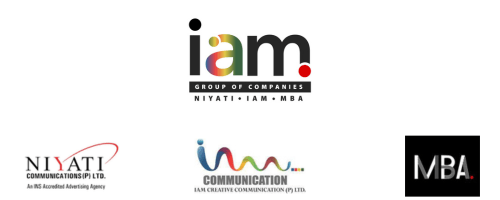The first step of every successful SEO strategy is – Keyword research. However, gone are the days when SEO was simply about chasing high-volume search terms. In 2025, the ecosystem around keyword search has evolved, where Google’s AI-powered search, voice queries, and contextual understanding factor in. Thus, your approach to keyword search today must be strategic, intent-driven, and user-focused.
Let us take you through a clear four-step keyword research process to help you find high-value keywords, understand your audience better, and build a content strategy that drives actual results.
Step 1: Build Topic Clusters around User Intent
Start with identifying broader topics your brand wants to dominate. Google has increasingly started rewarding topical authority.
To do this, think from your audience’s perspective – what are their problems and what are they searching for.
For instance, if you’re a digital marketing agency, take your search beyond “SEO services” and build topic clusters around:
- Growing organic traffic
- Generating B2B leads
- Improving local SEO
- Building content marketing strategies
Each cluster can then include related blogs, landing pages, or guides.
Insider Scoop:
– To discover subtopics, use Google’s “People Also Ask” and “Related Searches”.
– To find out what real users are asking, explore community platforms like Reddit, Quora, and LinkedIn Groups.
– Before content creation, validate topic popularity using Google Trends.
Once the topical clusters are built, it is ensured that your website is not just ranking for random keywords but becoming a trusted authority in your niche.
Step 2: Fill Each Topic with Keyword Ideas
Once the topics have been identified, fill them up with real keyword ideas. Here, keyword research planner or SEO tools can be used to discover what your audience actually types into Google.
Tools such as Google Keyword Planner, Semrush, Ubersuggest, and Ahrefs can be used to identify:
Long-tail keywords (e.g., “best keyword research tool for beginners”)
Keyword variations and synonyms (e.g., SEO vs. search engine optimization)
Question-based phrases (e.g., “how to do keyword research for SEO”)
Insider Scoop:
– Find out keywords already driving traffic to your site using Google Search Console.
– Find trending search queries using YouTube auto-suggest.
– Find natural keyword phrases your audience uses by browsing online forums and Q&A sites.
Once you conclude this stage, there will be a rich list of keywords grouped under your main topics, ready for deeper analysis.
Step 3: Prioritize Keywords Based on Intent, Volume & Opportunity
Everything cannot be targeted with keyword research. The goal should be to focus on keywords that balance relevance, search volume, and ranking potential.
To achieve that goal, it is crucial to grasp the four types of search intent:
- Informational: “What is keyword research?”
- Navigational: “Google Keyword Research Tool”
- Transactional: “Buy SEO tools online”
- Commercial Investigation: “Semrush vs. Ubersuggest comparison”
To analyse the SERP (Search Engine Results Page) features, search for your selected keywords in incognito mode. Check out what google shows and align your content accordingly. Take a good look at the existing blog posts, videos, or product listings for a better understanding.
It is also pertinent to check keyword difficulty using Semrush or Ahrefs. If your site has low domain authority, target long-tail keywords with moderate competition as they are easier to rank for and generally lead to better conversions
Step 4: Refine with AI & SEO Tools
Once the keywords have been shortlisted, refine and organize them for execution. Group similar terms, remove irrelevant ones, and create an actionable SEO content plan.
AI-powered tools can simplify this process:
- Surfer SEO and Frase.io analyze top-ranking pages and suggest related terms.
- ChatGPT can generate keyword variations, outlines, and FAQs.
- Clearscope ensures keyword relevance and semantic coverage.
- AnswerThePublic uncovers question-based keywords for voice search optimization.
Build a keyword mapping sheet with columns for keyword, volume, intent, difficulty, page type, and target URL. This acts as your blueprint for future content creation and on-page SEO.
Final Thoughts
In conclusion, today, the right keyword strategy isn’t about ranking first – it’s about being found by the right people at the right time. Effective keyword research is not so much about chasing data as it is about understanding user intent. When you know how to do keyword research strategically, you’re not just finding terms; you’re uncovering the mindset behind every search.
If you’re looking to refine your strategy, partner with us. At IAM, we have experts who can help you unlock the full potential of SEO. By combining tools like Google Keyword Research Tool, Semrush, and Ubersuggest with a clear understanding of your audience, we can build content ecosystems that drive lasting visibility and engagement for your brand.


